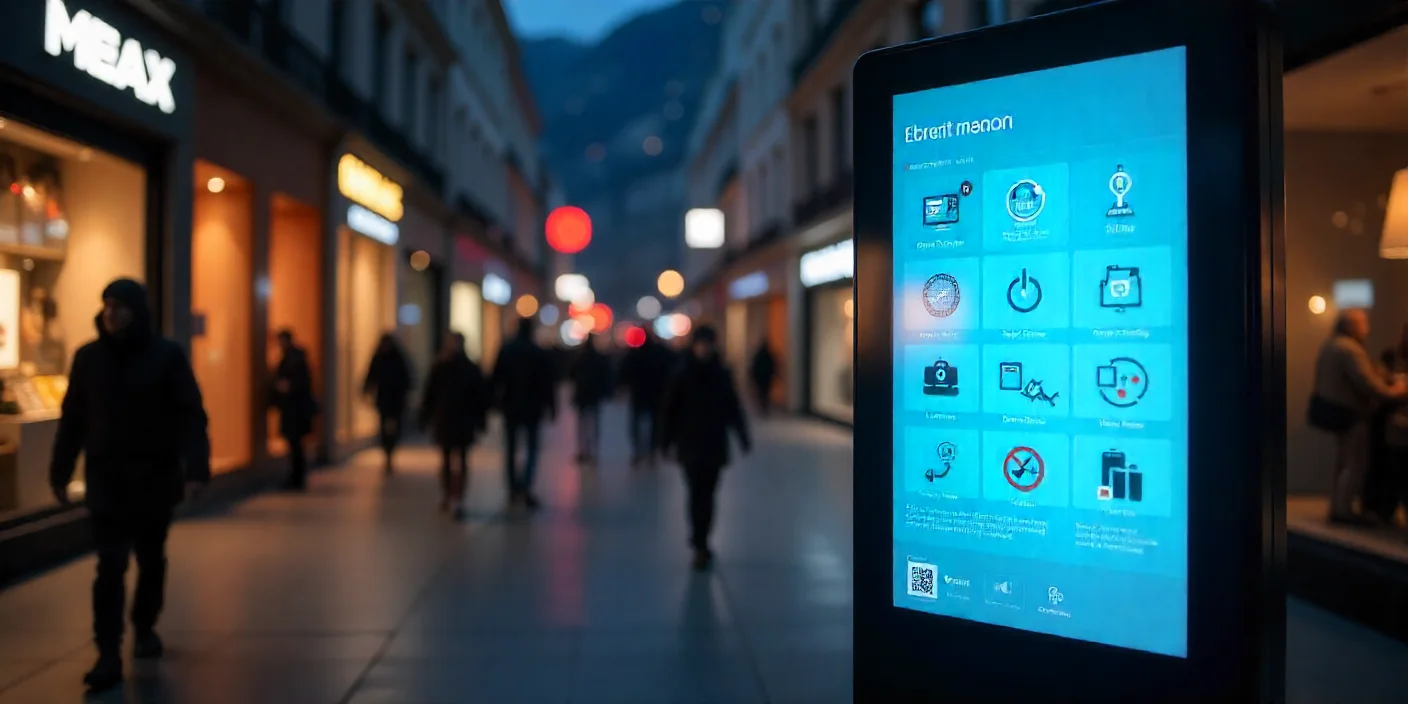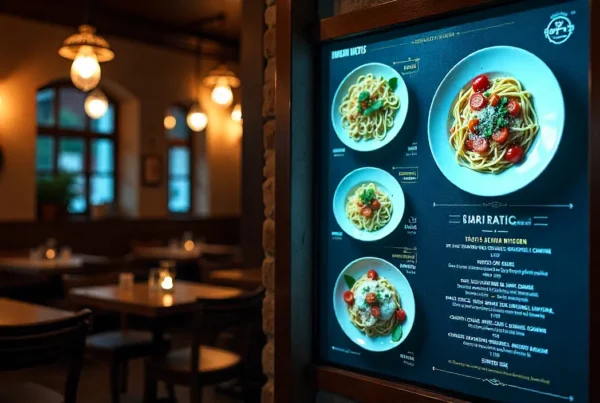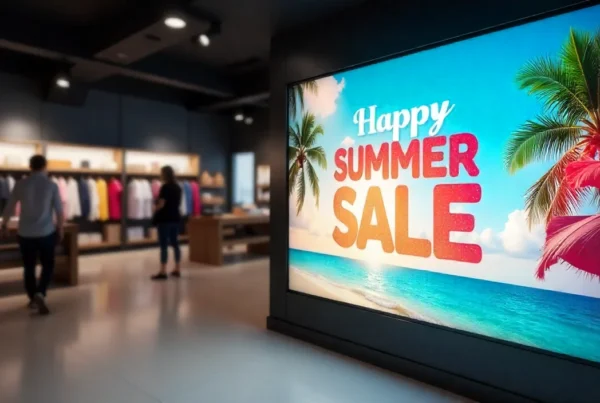Static maps cannot match dynamic spaces. Digital signage wayfinding software makes complicated places easy to navigate, combining live maps, intelligent routing, and branded experiences on the very screens your visitors do not ignore. Whether it is malls and hospitals or campuses and arenas, the right combination of interactive wayfinding & digital signage software, digital kiosks, and mobile tie-ins can reduce the line, minimize confusion, and promote your brand.
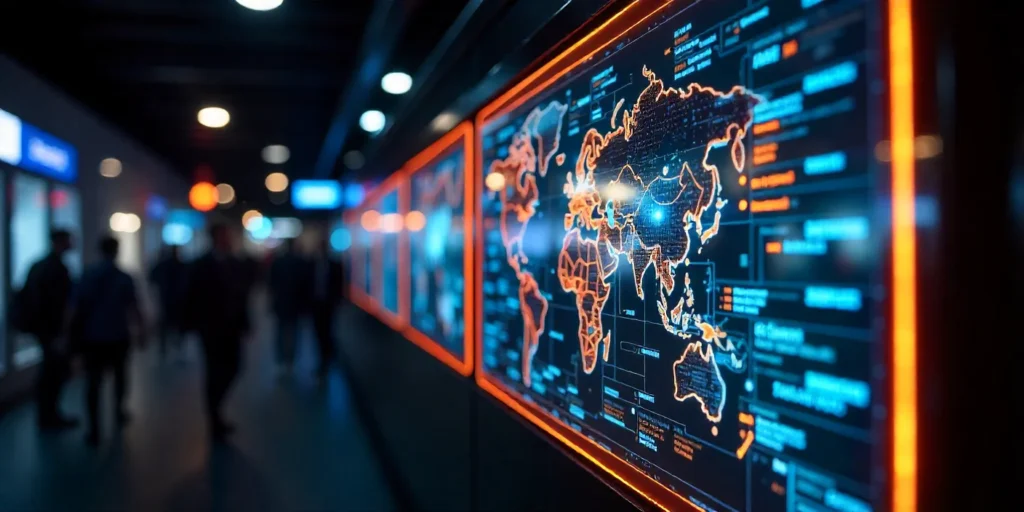
Why Modern Venues Are Switching to Wayfinding Digital Signage
Digital wayfinding signs have the potential to deliver what print never could deliver: real-time precision, customization, and instant updates. Digital wayfinding solutions respond in real-time whenever an elevator goes offline or a clinic moves—no reprints, no guesswork. Add to that interactive touchscreen solutions, and you have navigation that people love to use.
Top outcomes you can expect:
• Fewer questions of the “Where is…?” type and less strain on staff
• Quicker entry to stores, clinics, gates, and sessions
• Greater satisfaction among tenants because more guests arrive on time
• Interaction analytics insights that can be measured
What Is Digital Signage Wayfinding Software (and What It Isn’t)?
Essentially, digital signage wayfinding software is a content and mapping layer that drives wayfinding software on kiosks, walls, and video walls. It displays searchable maps, turn-by-turn directions, and context (events, closures, offers) on an interactive screen designed to match your brand.
It is not a fixed poster substitute. It is a living system that integrates with calendars, building systems, and event platforms to ensure wayfinding digital signage is up to date.
Where Wayfinding Shines (Use-Case Deep Dive)
Retail & Shopping Malls
Digital kiosks and all digital information kiosks in large retail destinations allow customers to search stores, filter by category, and receive the fastest path. Offer incentives at decision points and employ indoor wayfinding technology to equalize foot traffic among the floors.
Hospitals & Healthcare
Patients receive anxiety-reducing directions to clinics, laboratories, and drugstores. Digital wayfinding signage combines with appointment systems, where visitors scan a code and view a personalized path, which is monumental to on-time arrivals and employee productivity.
Corporate Campuses & Universities
Guide new employees or students to buildings, rooms, and departments. Using interactive kiosk software, individuals will be able to book rooms and transfer routes to mobile devices in hybrid offices.
Airports, Arenas & Events
Flows are maintained by live gate adjustments and crowd-sensitive detours. In the case of conferences and expos, event wayfinding signs indicate session rooms, capacity, and even the message that it will start in 5 minutes, to minimize the late throngs.
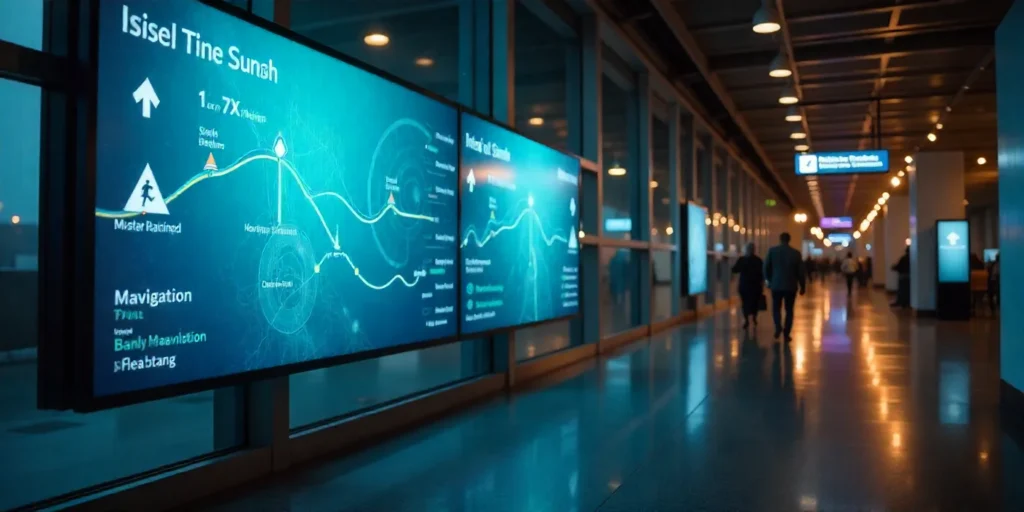
Visitor Experience: From “Lost” to “In Control”
Natural Interaction on Touch
Table stakes in interactive touchscreen solutions include pinch-to-zoom maps, predictive search, and oversized tap targets. Voice input is not mandatory, which enhances accessibility.
Brand-Forward Interface
A uniform interactive screen design–colors, iconography, typography–transforms navigation into a branded micro-experience as opposed to a generic map.
Mobile Hand-Off
Use a QR code on the kiosk to transfer the route to your phone. This basic bridge can take digital wayfinding solutions out of the lobby and ensure visitors are assured between turns.
What to Look for in a Wayfinding Platform
Mapping & Data Fidelity
• Multi-level, multi-building support and precise geographies
• Landmarks, accessible routes, and emergency paths
• Admin tools to change layouts without CAD knowledge
Indoor Wayfinding Technology
• Precise positioning with Bluetooth beacons, Wi-Fi RTT, or QR checkpoints
• Smooth transition to mobile navigation when GPS does not work inside
Cloud Controls & Integrations
• Refreshing maps and contents across sites with the central dashboard
• Room calendar connectors, event platform connectors, flight feed connectors, and alerts connectors
• Open APIs to add wayfinding software to your existing stack
Hardware: Kiosks and Screens That Fit Space
Digital Kiosks for High-Traffic Hubs
Independent digital information kiosk units occupy lines of sight in atriums and concourses. Use vandal-resistant glass, panels of higher brightness, and designs that are front-serviceable to facilitate quick maintenance.
Wall-Mounted Touchscreens for Corridors
Walls have slim digital kiosks that take up floor space and keep flows moving. Perfect in elevator banks and hall intersections.
Video Walls for Statement Wayfinding
They can divide their canvas into massive displays: a map on the left, wayfinding digital signage routes, and real-time announcements on the right.
Implementation Blueprint (From Pilot to Portfolio)
Phase 1: Plan & Map
Site survey, anchor and entrance definition, and digitization of floor plans to be used in the wayfinding software editor.
Phase 2: Build & Brand
Make themes, import destinations, and establish rules (e.g., after-hours closures). Interactive kiosk behaviors and role permissions should be wired.
Phase 3: Integrate & Test
Combine calendars, events, and alerting. Test in the actual digital kiosks in low-risk areas and repeat.
Phase 4: Launch & Learn
Launch, educate employees, and analyze data once a week to optimize routes and content.
Security, Governance, and Uptime
• Players and kiosk locked-down OS images
• The CMS must be allowed to access its roles-based so as to avoid rogue editing
• Network blip fallback of critical maps and wayfinding digital signage routes
• Periodic tests of indoor wayfinding technology beacons and firmware
Monetization & Retail Media (Optional)
Malls and arenas may pre-book a content lane on digital wayfinding signage where advertisements may be displayed at natural pause points (e.g., following a route being displayed). Keep advertisements contextual and never hide instructions. Trust is better than quick money.
How to Evaluate Vendors (Scorecard)
• Ease of use: Can non-technical staff update maps?
• Hardware fit: Does it work on your current screens, or does it need special kits?
• Scalability: Multi-property, multi-language, multi-admin ready?
• Support: 24/7 support and deploy on-site options?
• Total cost: Subscription to the software + kiosks + install + beacons
Regardless of whether you install a single digital information kiosk or 100, demand clear pricing and a clear roadmap.
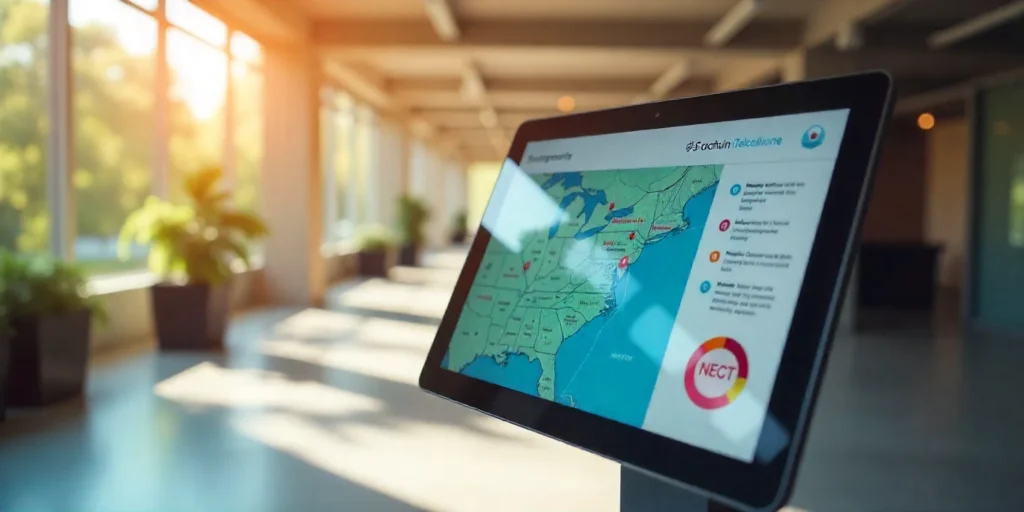
Event Wayfinding Signage: Navigation That Adapts by the Hour
Agile mapping is required in large conferences and sports days. Event wayfinding signs draw session schedules, capacity indicators, and room changes out of the planner and update routes every few minutes. Include nudges like “Starts in 10” and overflow signs to encourage self-distribution, so there is no need to hire staff to use megaphones.
Future Trends You’ll See Next
• Real-time AI routing, which modifies routes according to congestion patterns
• AR overlays that direct phones through corridors with camera-view arrows
• Sensor-triggered context (e.g., switch to evacuation mode during alarms)
• Unified ops in which interactive wayfinding and digital signage software reside in the same CMS as your promotions and announcements.
Make Every Journey Effortless
Combine great maps with good UX and the appropriate hardware, and digital signage wayfinding software is the silent secret weapon of your space. Use a pilot, test actual visitor behavior, and scale a network of digital kiosks and digital information kiosk touchpoints that do indeed minimize friction. You will lead every visitor to where they need to be, whether they are shopping, studying, taking a flight, or locating a session, with coherent branding, strong interactive touchscreen systems, and trustworthy indoor wayfinding technology, and your wayfinding digital signage will work 24/7 in the background.
FAQs About Digital Wayfinding Signage
How is digital different from static signage?
Static signs are incapable of adaptation. Digital wayfinding signage is updated in real time, is searchable, and includes turn-by-turn directions.
Do I need touchscreens?
Touch is ideal, but running browse-only maps on non-touch screens and including QR codes to offload to phones also fits your digital wayfinding solutions mix.
Can I use existing TVs?
Yes. To get non-touch maps, pair TVs with a media player. Select a commercial touch digital kiosk or wall unit to interact with.
Is it ADA-compliant?
Select platforms that have accessible routing, high-contrast themes, and voice support, which are fundamental capabilities in more advanced wayfinding software.
Does it integrate with events and calendars?
Quality systems are synchronized to event platforms and room calendars so that event wayfinding signage can show live updates.
What about indoor positioning?
Use indoor positioning, such as Bluetooth beacons or Wi-Fi RTT, to obtain blue-dot accuracy; otherwise, offer step lists and directions to landmarks.
Who maintains it?
Facilities/IT control maps/devices; Comms/Events control content—under one interactive kiosk software CMS with roles and approvals.

